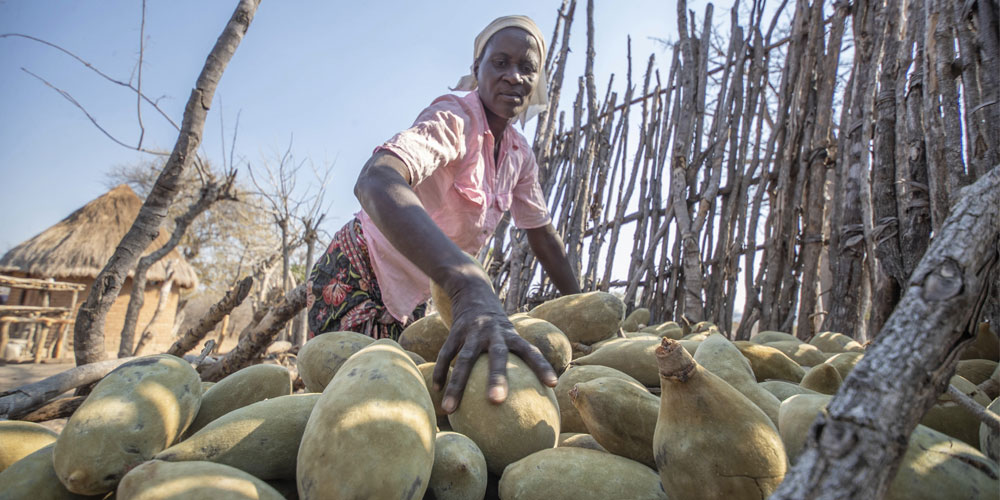
SATV Sept. 19: Since childhood, Loveness Bhitoni has collected fruit from the gigantic baobab trees surrounding her homestead in Zimbabwe to add variety to the family’s staple corn and millet diet. The 50-year-old Bhitoni never saw them as a source of cash, until now.
Climate change-induced droughts have decimated her crops. Meanwhile, the world has a growing appetite for the fruit of the drought-resistant baobab as a natural health food.
Bhitoni wakes before dawn to go foraging for baobab fruit, walking barefoot though hot, thorny landscapes with the risk of wildlife attacks. She gathers sacks of the hard-shelled fruit from the ancient trees and sells them on to industrial food processors or individual buyers from the city.
The baobab trade, which took root in her area in 2018, would previously supplement things like children's school fees and clothing for locals of the small town of Kotwa in northeastern Zimbabwe. Now, it's a matter of survival following the latest devastating drought in southern Africa worsened by the El Niño weather phenomenon.
The global market for baobab products has spiked, turning rural African areas with an abundance of the trees into source markets. The trees, known for surviving even under severe conditions like drought or fire, need more than 20 years to start producing fruit and aren't cultivated but foraged.
Tens of thousands of rural people like Bhitoni have emerged to feed the need. The African Baobab Alliance, with members across the continent’s baobab producing countries, projects that more than 1 million rural African women could reap economic benefits from the fruit, which remains fresh for long periods because of its thick shell.
The alliance's members train locals on food safety. They also encourage people to collect the fruit, which can grow to 8 inches (20 centimetres) wide and 21 inches (53 centimetres) long, from the ground rather than the hazardous work of climbing the enormous, thick-trunked trees. Many, especially men, still do though.
Native to the African continent, the baobab is known as the “tree of life” for its resilience and is found from South Africa to Kenya to Sudan and Senegal. Zimbabwe has about 5 million of the trees, according to Zimtrade, a government export agency.
But the baobab's health benefits long went unnoticed elsewhere. Gus Le Breton, a pioneer of the industry, remembers the early days.
“Baobab did not develop into a globally traded and known superfood by accident,” said Le Breton, recalling years of regulatory, safety and toxicology testing to convince authorities in the European Union and United States to approve it.
“It was ridiculous because the baobab fruit has been consumed in Africa safely for thousands and thousands of years,” said Le Breton, an ethnobotanist specializing in African plants used for food and medicine.
The U.S. legalized the import of baobab powder as a food and beverage ingredient in 2009, a year after the EU. But getting foreign taste buds to accept the new tang took repeated trips to Western and Asian countries.
“No one had ever heard of it, they didn’t know how to pronounce its name. It took us a long time,” Le Breton said. The tree is pronounced BAY-uh-bab.












